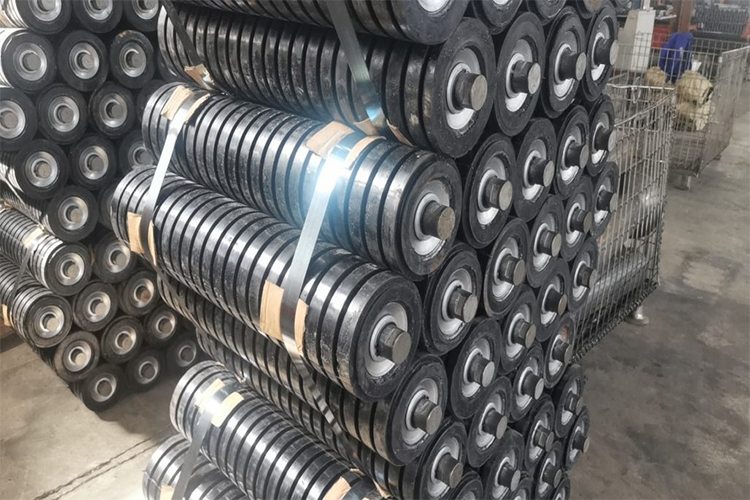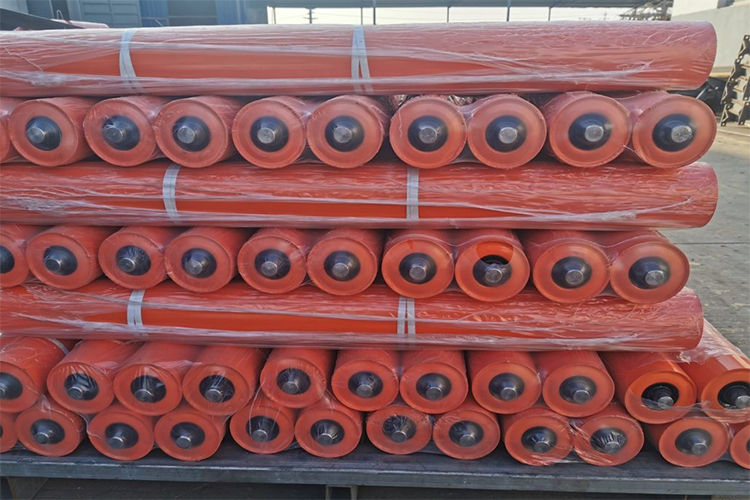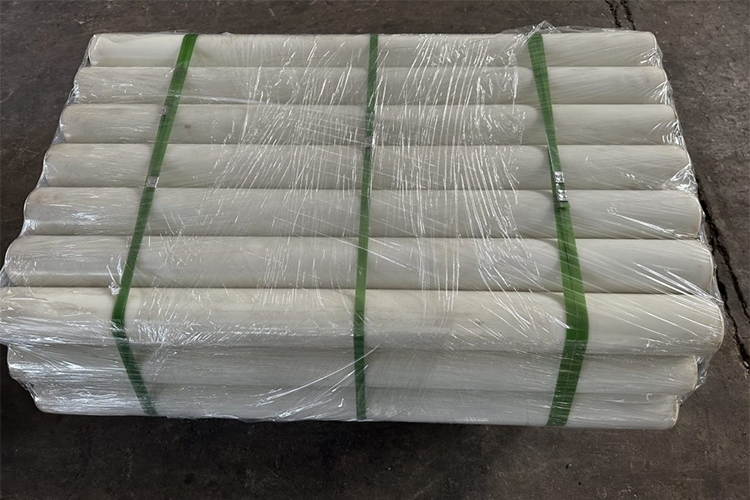Maintenance and Troubleshooting for Conveyor System Components
Regular maintenance is the linchpin in ensuring the longevity and efficiency of conveyor systems, vital for uninterrupted operations in various industrial environments. Integrating components like Conveyor Impact Rollers, Heavy Duty Roller Conveyors, and Nylon Conveyor Rollers into a maintenance regimen is not just about preserving these individual parts; it’s about sustaining the entire system’s operational integrity. Conveyor Impact Rollers, for instance, require regular inspections to ensure they continue to effectively absorb shocks and protect the conveyor belt. Heavy Duty Roller Conveyors, designed for enduring strenuous loads, demand consistent checks to maintain their structural integrity and performance under pressure. Similarly, Nylon Conveyor Rollers, celebrated for their lightweight and corrosion-resistant properties, also necessitate routine examinations to prevent wear and ensure smooth operation. Collectively, the maintenance of these components underlines the criticality of a holistic approach to conveyor system upkeep, emphasizing the importance of preventive measures to avert system failures, enhance efficiency, and extend the system’s service life.
Maintaining Conveyor Impact Rollers for Optimal Performance
Ensuring the optimal performance of a conveyor system significantly hinges on the regular maintenance of its Conveyor Impact Roller. These rollers are pivotal in absorbing the forces exerted during material loading, protecting both the conveyor belt and the system at large from potential damage. To maintain these crucial components effectively, there are several tips and best practices that can be followed.
Firstly, routine inspections are essential for identifying wear and tear on Conveyor Impact Rollers. These inspections should focus on assessing the rollers’ surface for any signs of damage, such as cracks, deformation, or excessive wear, which could compromise their shock-absorbing capabilities. Additionally, the integrity of the bearings within these rollers should be examined to ensure they are functioning smoothly without signs of seizing or excessive noise, which could indicate the need for lubrication or replacement.

Another critical aspect of maintaining Conveyor Impact Rollers involves checking the alignment and positioning. Misaligned rollers can lead to uneven belt wear, reduced efficiency, and even cause the conveyor belt to stray off its intended path. Ensuring that impact rollers are correctly aligned and securely fastened within their frames will help in maintaining uniform belt tension and prolong the belt’s lifespan.
Cleaning forms a crucial part of the maintenance routine. Conveyor Impact Rollers can accumulate dust, debris, and residues from the materials they handle, potentially hindering their performance. Regular cleaning to remove these accumulations will ensure the rollers can move freely and continue to provide effective shock absorption. This is particularly important in environments where materials being conveyed might be sticky or prone to caking on surfaces.
Furthermore, it is beneficial to keep an inventory of spare rollers and parts to facilitate quick replacements when necessary. Having immediate access to replacements minimizes downtime and ensures that the conveyor system can continue to operate efficiently without prolonged interruptions for maintenance or repairs.
Lastly, training maintenance personnel on the specific requirements for inspecting and maintaining Conveyor Impact Rollers is invaluable. Knowledgeable staff can identify potential issues before they escalate into more significant problems, ensuring that maintenance practices are both preventive and corrective as needed.
Maintaining Conveyor Impact Rollers for optimal performance involves regular and thorough inspections, alignment checks, routine cleaning, preparedness with spare parts, and informed maintenance personnel. Adhering to these best practices will significantly contribute to the longevity and efficiency of conveyor systems, ensuring they remain a reliable component of industrial operations.
Heavy Duty Roller Conveyor Maintenance Strategies
Maintaining Heavy Duty Roller Conveyor is crucial to ensure their longevity and reliability, especially when they are tasked with handling extreme loads and operating under harsh conditions. Proper maintenance strategies can prevent downtime, extend the conveyor’s life, and maintain its efficiency. This section outlines comprehensive guidelines for maintaining Heavy Duty Roller Conveyors, ensuring they continue to operate at peak performance.
Regular Inspection and Monitoring
Scheduled Inspections: Conduct regular inspections of the Heavy Duty Roller Conveyor, focusing on critical components such as rollers, bearings, and the conveyor belt. Look for signs of wear, damage, or alignment issues. It’s advisable to perform these inspections at predetermined intervals based on the manufacturer’s recommendations and operational intensity.
Real-Time Monitoring: Implement real-time monitoring systems, if possible, to continuously assess the conveyor’s performance. Monitoring systems can alert maintenance teams to issues as they arise, often before they become significant problems.
Cleaning and Lubrication
Routine Cleaning: Keep the conveyor free of debris and buildup. Accumulation of materials can lead to roller or bearing damage and may cause the conveyor to work harder, increasing wear and energy consumption. Depending on the environment, cleaning may need to be performed daily or weekly.
Proper Lubrication: Regularly lubricate bearings and other moving parts to reduce friction and wear. Use lubricants recommended by the manufacturer, as they are specifically chosen to suit the conveyor’s materials and operational conditions.
Component Replacement and Repair
Worn or Damaged Parts: Replace worn or damaged parts promptly to prevent further damage to the conveyor system. Pay particular attention to rollers and bearings, as these are high-wear components that directly impact the conveyor’s functionality.
Roller Alignment: Ensure that rollers are correctly aligned and adjusted. Misalignment can cause uneven wear, increased energy usage, and potential damage to the conveyor belt.

Training and Documentation
Staff Training: Train maintenance staff and operators on proper conveyor inspection and troubleshooting procedures. Knowledgeable personnel can identify and address minor issues before they escalate into major problems.
Maintenance Documentation: Keep detailed records of all inspections, maintenance activities, and replacements. Documentation can help identify recurring issues and guide future maintenance strategies.
Emergency Preparedness
Spare Parts Inventory: Maintain an inventory of critical spare parts, such as rollers, bearings, and belts. Having these parts readily available can significantly reduce downtime in the event of a failure.
Emergency Response Plan: Develop and implement an emergency response plan for conveyor failures. This plan should outline the steps to be taken in the event of a breakdown, including who to contact and how to safely shut down the conveyor.
Maintaining a Heavy Duty Roller Conveyor requires a proactive approach, focusing on regular inspections, proper cleaning and lubrication, timely replacement of worn parts, comprehensive training, and emergency preparedness. By adhering to these guidelines, businesses can ensure that their Heavy Duty Roller Conveyors remain reliable, efficient, and capable of handling extreme loads and conditions over the long term.
Caring for Nylon Conveyor Rollers
Nylon Conveyor Rollers are renowned for their durability and efficiency in facilitating the smooth operation of conveyor systems across various industrial environments. However, to maintain their effectiveness and prolong their service life, a regimen of care and maintenance is essential. Below are some maintenance tips designed to keep your Nylon Conveyor Rollers in top condition.
Regular Inspection and Cleaning
One of the first steps in caring for your Nylon Conveyor Rollers is to implement a schedule of regular inspections. Look for signs of wear and tear, such as cracks, deformations, or any accumulation of debris that could impede the roller’s function. Cleaning should be done with mild detergents and soft cloths to avoid damaging the nylon surface. It’s crucial to ensure that the rollers are free from substances that could cause friction or clog the system.
Lubrication of Bearings
While the nylon material itself may not require lubrication, the bearings within the rollers should be regularly lubricated to ensure smooth operation. Use the appropriate lubricant recommended by the manufacturer, as improper lubrication can attract dust and debris, leading to increased wear and potential failure of the roller bearings.

Environmental Considerations
Nylon Conveyor Rollers are chosen for their ability to perform in a variety of environmental conditions, including those with exposure to chemicals or significant moisture. Despite their resilience, it’s important to consider the specific environmental challenges your conveyor system may face. In highly corrosive environments, more frequent inspections and maintenance may be necessary to prevent degradation of the rollers.
Avoid Overloading
One of the key aspects of caring for your Nylon Conveyor Rollers involves respecting their load-bearing limits. Overloading the conveyor system can lead to premature wear and failure of the rollers. Ensure that your system is designed to distribute the load evenly and that the rollers are rated for the maximum weight they will need to support.
Replacement Strategy
Even with the best care and maintenance, rollers will eventually wear out and require replacement. Having a strategy for replacement, including regular inspections and keeping a supply of replacement rollers on hand, can minimize downtime. It’s important to replace worn or damaged rollers promptly to maintain the efficiency and safety of the conveyor system.
Nylon Conveyor Rollers offer numerous benefits in terms of durability and efficiency, but like all mechanical components, they perform best with regular care and maintenance. By following these maintenance tips, you can ensure that your Nylon Conveyor Rollers remain effective, providing reliable service in various environments for years to come.
Troubleshooting Common Issues with Conveyor Components
Conveyor systems are complex assemblies where each component plays a pivotal role in its overall operation. Among these, Conveyor Impact Rollers, Heavy Duty Roller Conveyors, and Nylon Conveyor Rollers are key elements whose performance is critical to the system’s efficiency. However, like all mechanical components, they are prone to issues that can disrupt operations. Understanding common problems and knowing how to address them is essential for maintaining a smooth conveyor process.
Conveyor Impact Roller Issues and Solutions
A frequent issue with Conveyor Impact Rollers is wear and tear on the surface, which can reduce their shock-absorbing capabilities. This wear could be due to excessive loads or the impact of abrasive materials. Regular inspection can help identify worn rollers early, and they should be replaced before they compromise the conveyor belt’s integrity. Additionally, impact rollers can become seized if not properly maintained. Applying lubrication as part of routine maintenance can prevent seizing and ensure rollers move freely.
Heavy Duty Roller Conveyor Challenges
Heavy Duty Roller Conveyors are designed to handle substantial loads, but they can still encounter issues such as misalignment or roller bearing failure. Misalignment can cause uneven wear on the rollers and the conveyor belt, leading to premature failure. Ensuring all components are correctly aligned and securely fastened during installation and regular checks can mitigate this. Bearing failures are often due to inadequate lubrication or the ingress of contaminants. Regular cleaning and the application of suitable lubricants can extend bearing life and prevent failures.
Nylon Conveyor Roller Difficulties
Nylon Conveyor Rollers are valued for their lightweight and corrosion-resistant properties, but they can experience issues such as static buildup or deformation under heavy loads. Static electricity can accumulate on nylon rollers, attracting dust and debris that can affect the conveyor’s operation. Grounding the conveyor system or using anti-static sprays can help manage this issue. Deformation of nylon rollers under excessive weight can reduce their effectiveness. Ensuring the conveyor system is not overloaded and that nylon rollers are used within their load-bearing capacity will prevent deformation.
General Troubleshooting Tips
For all types of rollers, ensuring proper installation and routine maintenance is key to preventing many common issues. Regular inspections can identify potential problems before they escalate, and keeping a maintenance log can help track the performance and issues of each component over time. Additionally, training maintenance personnel on the specific characteristics and requirements of Conveyor Impact Rollers, Heavy Duty Roller Conveyors, and Nylon Conveyor Rollers will equip them with the knowledge to identify and resolve issues promptly, minimizing downtime and maintaining operational efficiency.
While Conveyor Impact Rollers, Heavy Duty Roller Conveyors, and Nylon Conveyor Rollers are integral to the performance of conveyor systems, they are not immune to issues. Through regular maintenance, proper handling, and timely troubleshooting, these common problems can be effectively managed, ensuring the conveyor system remains efficient and operational.
Information contained on this page is provided by an independent third-party content provider. Frankly and this Site make no warranties or representations in connection therewith. If you are affiliated with this page and would like it removed please contact [email protected]

